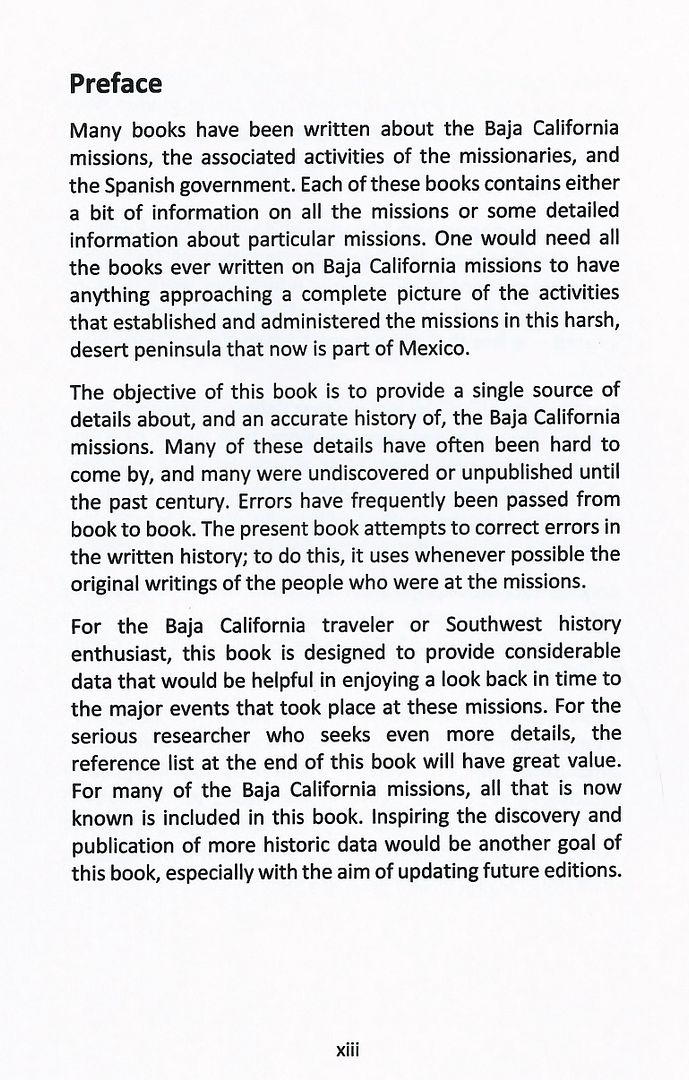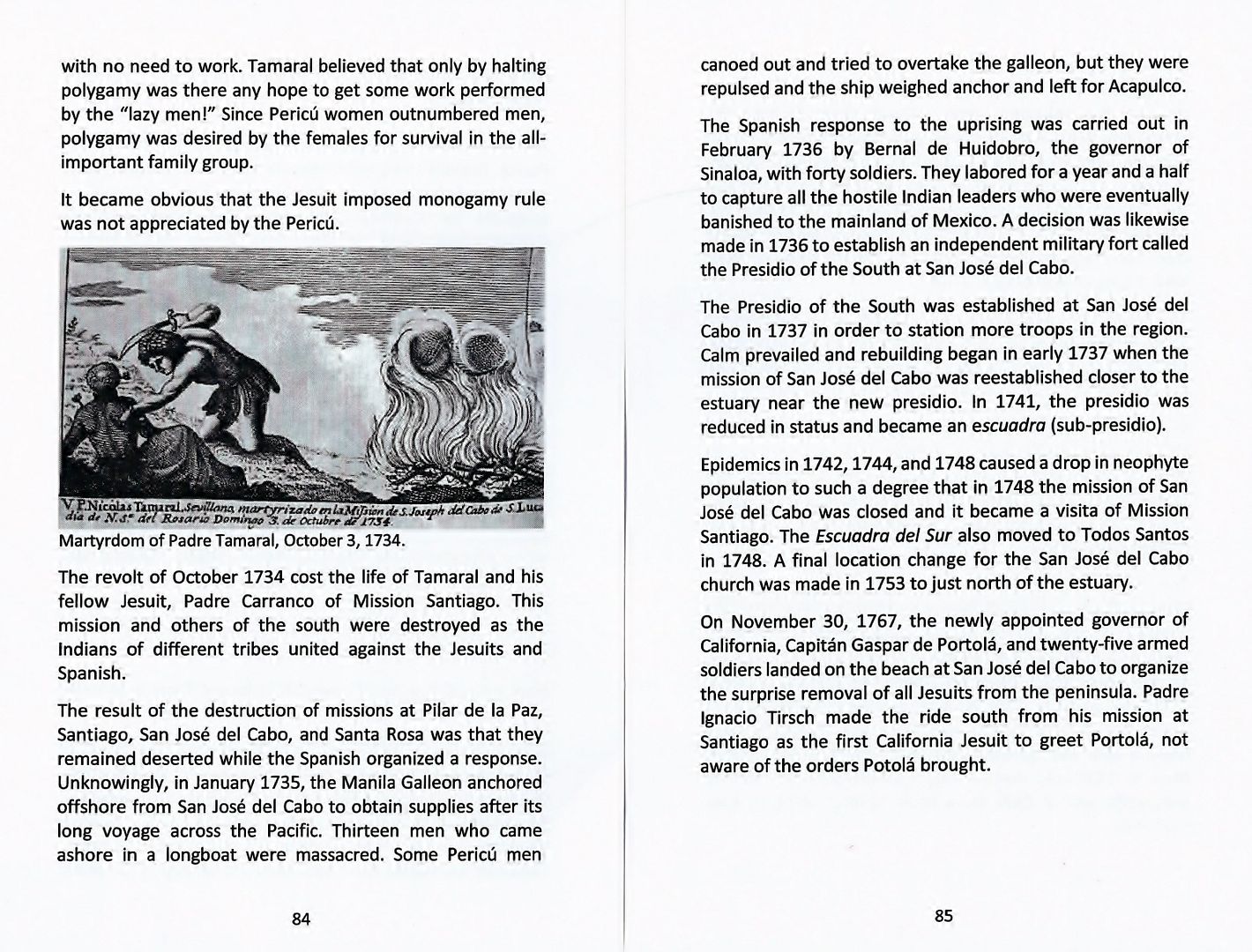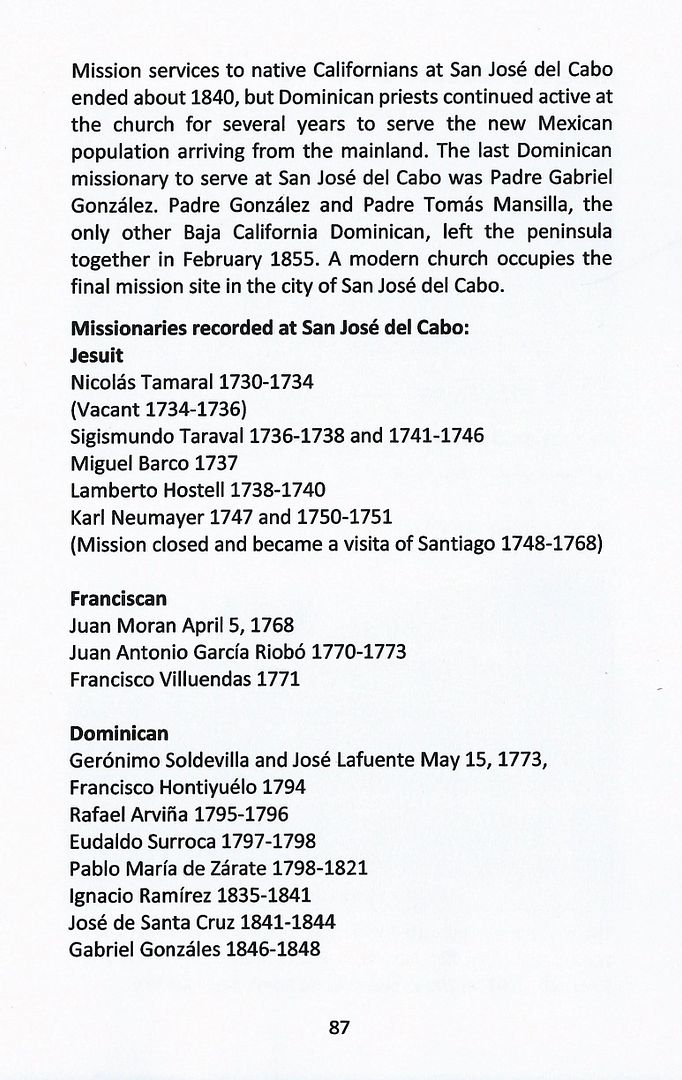Quote: Originally posted by norte  | Quote: Originally posted by David K  | Harald, looking over the letters written by Padre Juan María Salvatierra I could glean some population figures...
In June 1698, the California colony had 22 Spaniards.
On July 9, 1699, Salvatierra wrote that the Loreto presidio consisted of 27 soldiers with more expected to arrive soon.
I found a population report for the number of non-native Californians in the year 1700, when there were only two missions...
March 1, 1700, from a letter by Padre Salvatierra:
66 persons: padres, soldiers, muleteers, Filipinos, Christian Indians from the mainland, two Spanish soldiers of fortune, besides women and children.
In a letter dated August 29, 1701, Salvatierra reports of being somewhat in danger because of only having 16 soldiers for protection as the others had
to be dismissed for lack of money to pay them.
|
Where did you get these letters? and did you translate them?
|
They are published in several books, including the Dawson Baja California Travelers Series, written by different scholars and translated into English.
See my list of reference sources in the back of my book.
My Spanish is not good enough to enjoy reading Old Spanish or other European languages (German often). The Jesuits were from many countries. However,
after their expulsion from the Western Hemisphere (1767-1768), missionaries were usually Spanish citizens... some born in Mexico.
|





 we are not talking about toothpaste for a start....
we are not talking about toothpaste for a start....























































